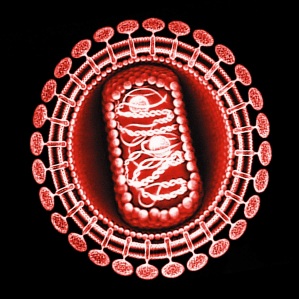The human genome is stuffed full of ancient retrovirus genomes, a heritable legacy of ancestral infections. These pieces of DNA are dynamic elements, and can hop around the human genome and drive its ongoing diversification. Mostly, though, they are kept subdued by epigenetic changes that prevent them doing any damage.
While identifying threatening new viral genetic material is an important job for our innate immune system, there is typically no reaction against these ancient endogenous benign retrovirus cDNAs that in modern terms are essentially a part of our own genome.

Yet scientists have now implicated this evolutionary trade off between the immune system being able to sense and react against infectious DNA viruses (like retroviruses, adenoviruses, herpesviruses) while staying quiet against non-infectious ancient viral elements in certain autoimmune diseases, like Aicardi–Goutières syndrome (AGS). In AGS, mutations in the Trex1 exonuclease enzyme allow non-infectious ancient retroviral nucleic acids to accumulate and cause heart damage.
They speculate that the immune system is almost inappropriately constrained against sensing these dangerous pools of foreign DNA, leading to autoimmune consequences.
Happily, though, there is a potential treatment: using reverse-transcriptase inhibitors to prevent the formation of ancient retroviral immunostimulatory cDNAs in the first place.
Image credit: Churchill Madikid
Repost from the Stojdl Lab blog.




